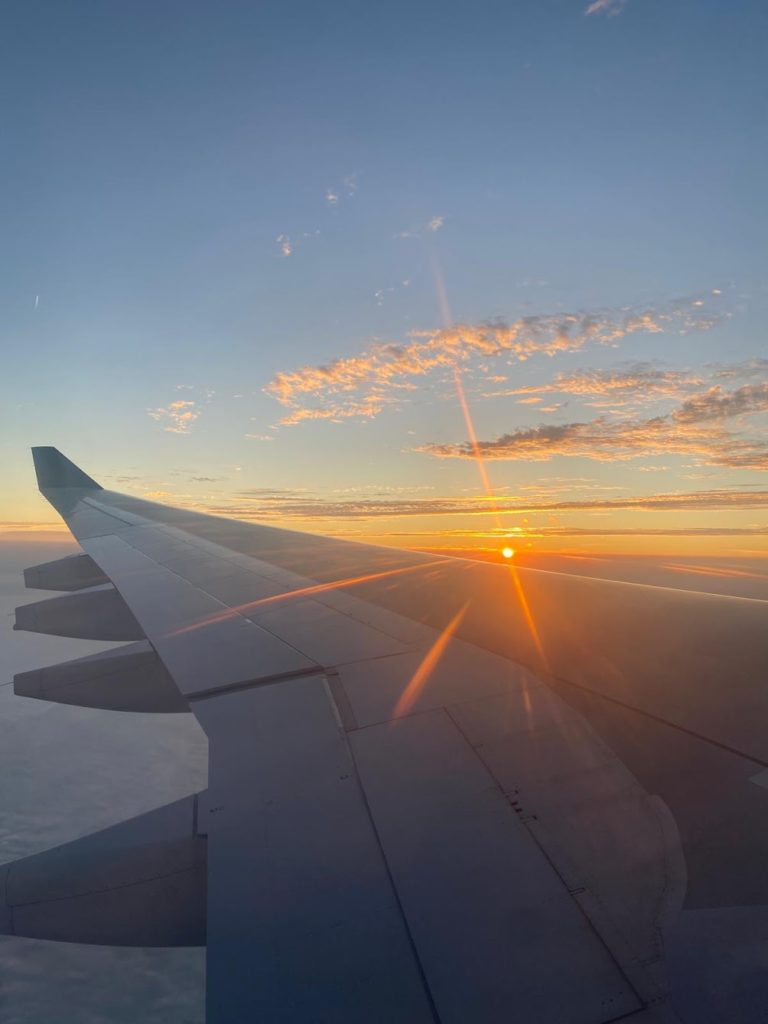After an exhausting travel day flying from San Francisco to Montreal to Morocco, our group spent the day battling to stay awake so we could explore Casablanca, catch up on school work, and hopefully fend off any lasting jet lag by getting to sleep at a reasonable time. When I finally went to bed that night, ready to get a full 12 hours of sleep, I never would have expected to be woken up by the worst earthquake to hit Morocco in over a century. The shaking woke me up around 11:15, and after a brief moment of confusion, I went with my roommate, Sasha, to hide under the hotel desk. While certainly scary, being so far from the epicenter fortunately meant our group was safe and no damage was done in Casablanca, although at that point we had no idea of the true extent of the earthquake’s damage. In the following few days as the news spread and the death toll increased, I grappled with a lot of emotions: relief for my own safety, heartbreak for the country and its people, and guilt at the privilege I carried as a tourist who didn’t have to deal with any of the very real devastation so many people so close by were facing. Although the earthquake did mean our program would have to change about half of its plans for Morocco — which brought some disappointments and uncertainties of its own — this was still nothing compared to the changes the earthquake was causing for residents of Morocco, particularly near the epicenter. To not take away resources from those who needed them, our plans changed from going to Marrakesh and Ouarzazate to Bensmim and Tangier instead, although our first two weeks of plans in Casablanca and Rabat remained the same.

This, coupled with our sessions learning about the discrimination and harassment women and members of the queer community could face in Morocco, certainly made the transition more difficult than I anticipated, but getting out into the city helped me to reconnect with the energy and excitement of this new place. The first weekend we spent exploring Casablanca and immersing ourselves in the new culture by drinking plenty of mint tea, visiting the Hassan II Mosque (full of some of the most beautiful and intricate architecture I’ve ever seen), and roaming through the streets, soaking the city in. On Monday we headed to Rabat, where we would spend the next week and a half living with our homestay families and taking classes in the city.
As a part of the program’s experiential learning component, we stay with host families for a week or two at a time in each country, so we had our first homestay experience in Rabat. Ruthie, a friend in my cohort, and I lived with a family in the Medina, or the walled, historic part of Rabat. Although there was quite a strong language barrier since they mainly spoke Darija (the Moroccan dialect of Arabic) and we only learned the most basic phrases to communicate, we were still able to feel the generosity and beauty of the family’s life. Throughout our time in Rabat, we were taught how to make the most delicious vegetable tajine, discussed Moroccan politics with our host brother, and learned what it means to truly get clean through the cultural experience that is the hammam (getting scrubbed down at a communal bathhouse).
As for our classes, besides fumbling our way through basic Darija lessons, we had lectures from a variety of speakers, ranging from activists to government representatives to researchers. Through these lectures, we learned about the struggles of rural women for land rights, the aspirations of youth in agriculture, the implications of the tourist industry for Moroccan locals and ecosystems, the history of people’s protests in Morocco, and much, much more.
Outside of class and home, I tried to spend as much time as possible (when I wasn’t fighting my traveler’s sickness) walking around and exploring the city. Although not necessarily the most comfortable place to walk around alone as a young woman, the Medina was still an amazing place full of bustling life, intricate artisanal crafts, and delicious fruit juice vendors, and always made for a fun adventure exploring with friends. Outside of the Medina, my other most frequented spots would have to be the beach — perfect for long walks and stunning sunsets — along with a lovely garden and an incredible Syrian restaurant with some of the best falafel and lentil soup of my life. Seeing the Hassan Tower, an old unfinished mosque, with my friend Diarra was also another highlight, since the architecture of it and the mausoleum are so unlike anything I’ve seen back in the Midwest.
To end our time in Rabat, we had a farewell party with our host stay families, the SIT faculty, and our entire cohort, at a cafe just outside the Medina. There was, of course, mint tea and lots of pastries, but the real excitement of the party was in the live music, played by a Moroccan group. I danced with my host mom, with my friends, until I thought I couldn’t dance much more, and the energy in the room that evening certainly made it one of my favorite moments in Morocco so far. Needless to say, the emotions felt across these couple weeks were nothing I could have planned for, and wherever our change in plans leads us next, I couldn’t be more ready to follow.